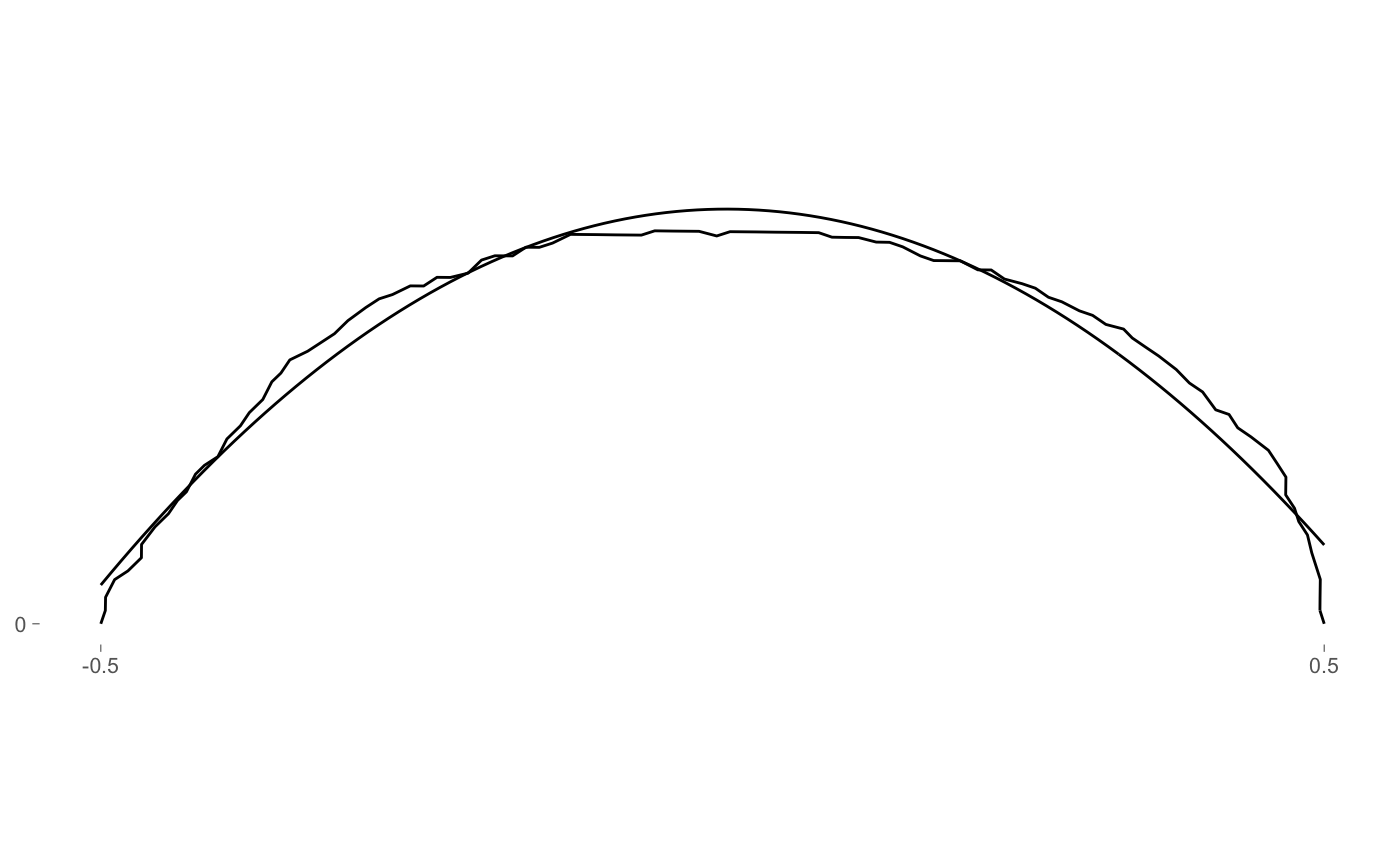Natural polynomials
npoly.RdCalculates natural polynomial coefficients using stats::lm
npoly( x, degree, raw, drop_coo, from_coo = coo, to_coe = { { coe } }, ... ) npoly_i(x, nb_pts, from_coe, ...)
Arguments
| x | |
|---|---|
| degree | polynomial degree for the fit ( |
| raw |
|
| drop_coo |
|
| from_coo, to_coe | column names |
| ... | for generics. Useless here. |
| nb_pts | number of points to sample and on which to calculate polynomials |
| from_coe | column name for inverse method |
Value
a list with components when applied on a single shape:
coeffthe coefficients (including the intercept)orthowhether orthogonal or natural polynomials were fitteddegreedegree of the fit (could be retrieved throughcoeffthough)baseline1the first baseline point (so far the first point)baseline2the second baseline point (so far the last point)r2the r2 from the fitmodthe raw lm model
Details
Curves must be registered on a bookstein baseline, with the first coordinates on (-0.5, 0) and the last on (0.5, 0). Use coo_bookstein
A polynomial of degree n use this fit:
\(y = a_{0} + a_{1}x^1 + a_{...}x^{...} + a_{n}x^{n}\)
And thus returns n+1 coefficients. The +1 being $a_0$ ie the intercept.
In retired Momocs, baseline was free and not necessarily Bookstein. Not sure this was really helpful but I'm sure this overcomplicated coding. If your shapes are not registered on Bookstein coordinates, you will be messaged (not for coo_single though)
Functions
npoly_i: inverse npoly method
See also
Examples
op <- o %>% npoly(degree=3) op#> # A tibble: 1 x 4 #> a0 a1 a2 a3 #> <dbl> <dbl> <dbl> <dbl> #> 1 0.339 0.0264 -1.16 0.0253 #> ❯coe_single with 4 coefficientsop %>% class#> [1] "npoly_single" "coe_single" "tbl_df" "tbl" "data.frame"#> ! npoly: 'degree' not provided and set to 5#> # A tibble: 3 x 7 #> coo var domes view ind coe coe_i #> <list<coo_single[> <fct> <fct> <fct> <fct> <list<coe_single> <list<coo_single> #> 1 <tibble [99 × 2]> Aglan cult VD O10 <tibble [1 × 6]> <tibble [120 × 2… #> 2 <tibble [96 × 2]> Aglan cult VL O10 <tibble [1 × 6]> <tibble [120 × 2… #> 3 <tibble [95 × 2]> Aglan cult VD O11 <tibble [1 × 6]> <tibble [120 × 2… #> ❯mom_tbl

